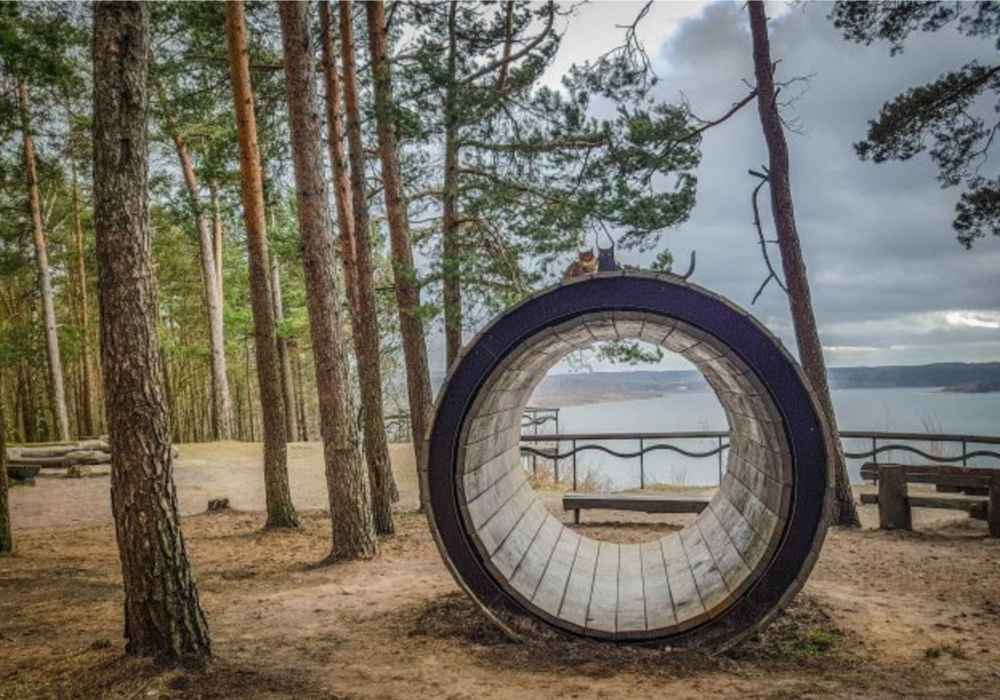As spring slowly blossoms across Europe, travelers are eager to head back out into nature and witness its rebirth first-hand. Lithuania, a country renowned for its untouched forests and lush groves, is ready to welcome this wave of travelers with an abundance of walking paths and nature experiences.
Lithuania has hundreds of walking paths that vary in both length and difficulty. From the hardened hiker to a nature-loving family, there are many opportunities to escape the buzz of the city and breathe in some revitalizing countryside air.
In preparation for the rapidly warming weather of spring, many are now set on finding new nature experiences for their next getaway. With Lithuania planning to refurbish a lot of the local-beloved walking paths through some of its best-kept natural secrets, there is no better time than now to pay the country a visit. From exploring the continental dunes of Dzūkija to one of the oldest oak forests in the country, there is something fit for everybody’s preferences.
Walking among Juniper trees. The 1.3 km long Arlaviškių — or Juniper Valley — nature trail just outside of Kaunas, Lithuania’s second-largest city invites you to admire the magnificent panorama of the widened Nemunas river, Dabinta Island and the enchanting surrounding outcrops. With the renovation of the trail now complete, its novelty is more easily observed: naturally grown on a steep slope, with patches of steppe grassland between the juniper trees and in other parts of the reserve that are home to rare plants, mushrooms, springs with forming tuffs, and even hanging wetlands.
Oasis of sandy dunes. The legendary sand dunes of Lithuania can not only be found in the west of the country by the Baltic sea. Dzūkija National Park, found in the southern part of Lithuania, is home to the largest mass of continental dunes in the country. In the Marcinkoniu Geomorphological Reserve, work is currently underway to open up the historic dune and remind people what the landscape looked like 10, 000 years ago. The dune is currently best viewed along the Marcinkonys-Varėna road.
200-year-old oak forest. In spring, it will be possible to return to the Dūkštai Oak Grove Nature Trail to see one of the oldest and largest natural oak forests in Lithuania. Among the undergrowth of 200-year-old oak trees there are several species of rare and endangered animals, plants, fungi, and lichens that call the grove home. As these trees were worshiped as gods several hundred years ago, wooden statues made in their honor can be discovered by those who wander through the area. Adding to the mystic energy of the park is the Airėnai Stone, with runes etched onto it whose meanings are still a mystery to mankind.
Rural hilltops and the grave of a giant. Active outdoor recreation is still a hot topic this season. Last year, the Kaišiadorys Tourism and Business Information Centre created 10 new routes of varying difficulty for those wishing to explore the region on foot. The region is renowned by nature-loving locals for its idyllic, rural landscapes filled with hills and mounds. Some of the most-notable natural sights are the Mergakalnis scarp — the highest sightseeing place on the Kaunas lagoon shore — and the Masiejūnai mound, which legends tell is the resting place of a giant. All of the must-visit mounds, beaches and interesting stops are marked on the renewed trails.
Awe-inspiring field of bison. This spring, Dzūkija National Park will invite you to visit Lithuania’s newest bison nursery, located between Marcinkonys and Zervynos. From the observation deck, you will be able to watch Europe's largest beasts — which have been held as a national symbol in the country due to their long history — in an exhibition enclosure. Visitors will have the opportunity to learn more about this rare species and understand why bison need to be protected.




Comments powered by CComment